Journey
Spinosaurus and T-Rex in Berlin
The Berlin natural history Museum is transformed into a “Jurassic Park”: in Addition to the giant Tyrannosaurus Rex is there now also a Spinosaurus. Not only their skeletons for dinosaur Fans exciting.
-
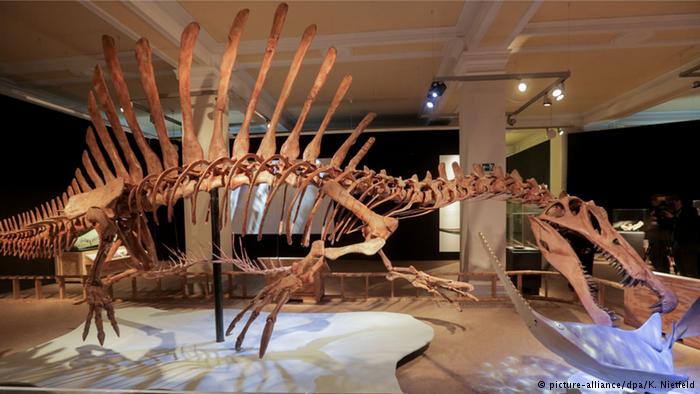
A new guest
Since this week is the skeleton of the Spinosuarus aegyptiacus in Berlin. It is with its 18 meters length of the body of one of the largest dinosaurs in an exhibition. Until the middle of June, to Berlin visitors the opportunity to marvel at. About 100 million years, the giant lived. This exhibit, however, is mainly made of synthetic resin. Only two bones are original.
-
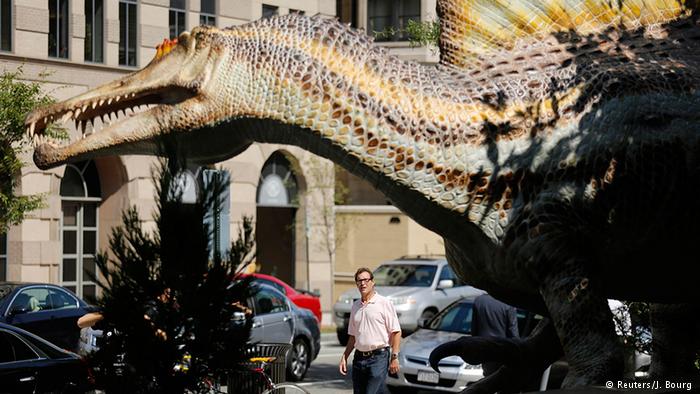
So saw the Spinosaurus, probably from
This model was created for an exhibition of the skeleton in the Museum of the National Geographic Society in Washington designed. Probably Spinosaurus near the coast, lived, and there are fish and other animals hunted. He is expected both in the water and on Land comfortable.
-
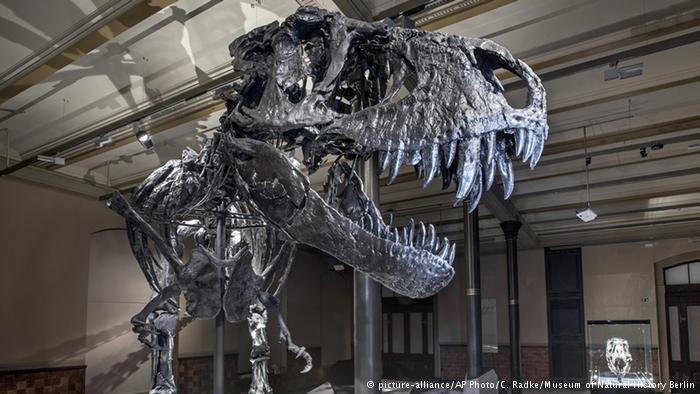
Tristan is happy to society
Only about twelve meters long, in contrast, is the skeleton of a Tyrannosaurus rex Tristan. It is for at least three years to see. The Remains were originally found in Montana (USA). A sponsor has the skeleton of the end of 2015, the Museum in Berlin is provided. Tristan is only 60 million years old, but his bones but real.
-

Lengthy Puzzlearbeit
Tristan is like a gigantic archaeological Puzzle consisting of 300 items, 170 of them are original, however, only laboriously assembled. That alone is the work but still not done. Because even during the exhibition will Tristan continue to be investigated scientifically.
-
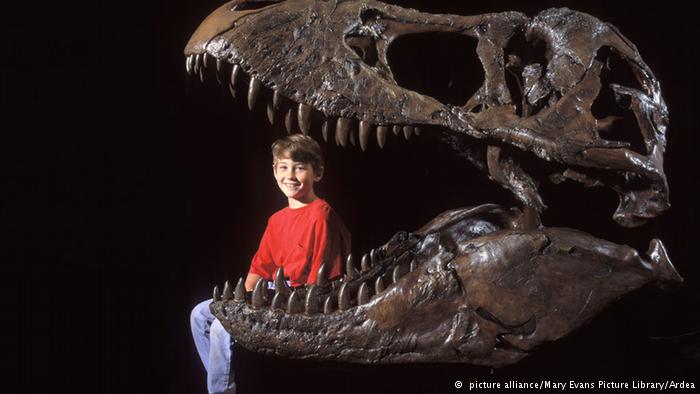
Size comparison
This T-rex skull is a bit smaller than the one from Berlin. Nevertheless shows the size comparison that people probably only be a Starter for the giants have been likely to be. However, there are doubts about whether the Dino is a good hunter. With its Stummelärmchen he would hardly prey capture. Also, he has no fangs. Perhaps he was more of a scavenger?
-
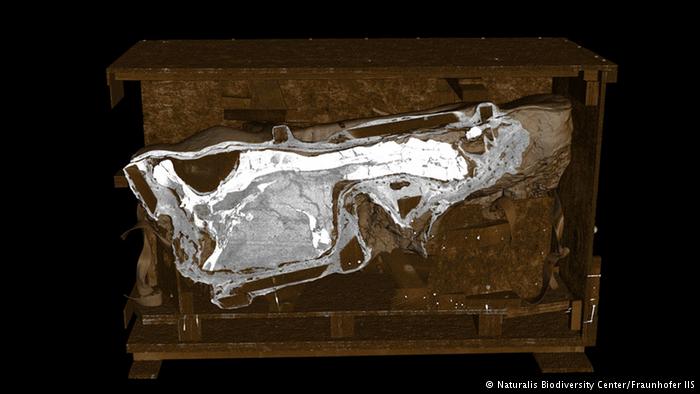
The solution to the puzzle in the x-ray
The key for the solution of these and other questions, could the Fraunhofer Institute for Integrated Circuits IIS have. Because there was recently a T-rex skull investigated: In the development center x-ray technology in Fürth, the researchers have a fossilized skull in the largest CT scanners pushed. The was extra developed to make whole Container to Shine through.
-
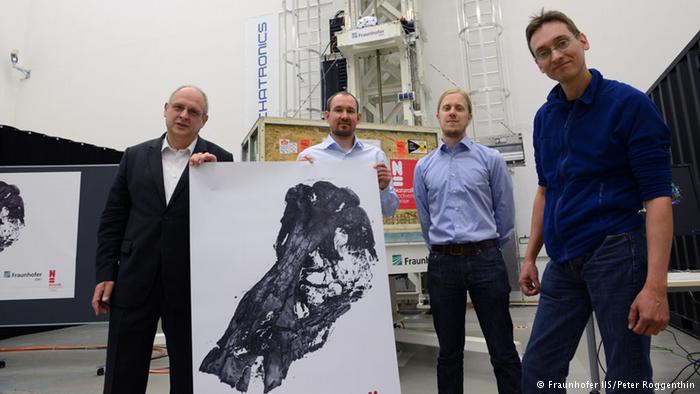
Strong Team for the science
The T-rex was like the, now in Berlin – in the U.S. Montana found. The Naturalis Biodiversity Center in the Netherlands provides the paleontological Expertise, and the IIS supports the research project by scanning and processing the data.
-

And so he sees in the CT Scan
Awesome, he doesn’t: The shipping crate, packing materials, and calcium deposits were removed. Only the actual skull remains. The Scan can be invisible weak points, such as cracks, before the reconstruction, to make it visible. Also, missing components now on the Computer may be printed to the skeleton to complete.
-
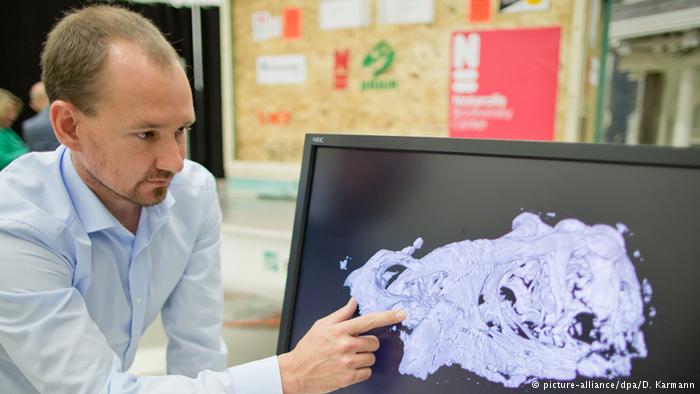
Look Inside
Michael Böhnel, one of the developers of the x-ray of the IIS, shows the three-dimensional image of the skull. The paleontologists are interested in particular for the forms in the Schädelinneren – around the cranium. This you can now examine without the skull opening.
Author: Fabian Schmidt
-
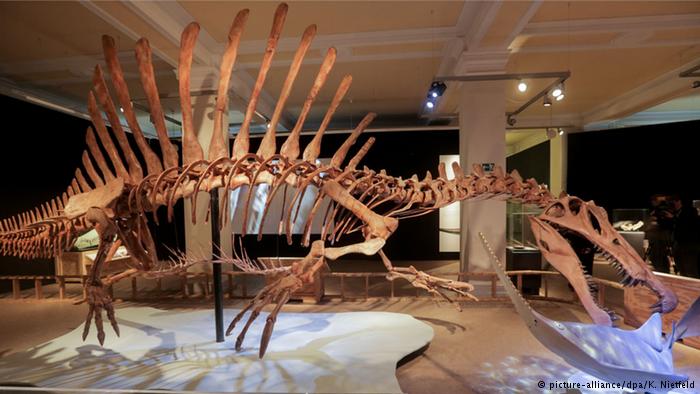
A new guest
Since this week is the skeleton of the Spinosuarus aegyptiacus in Berlin. It is with its 18 meters length of the body of one of the largest dinosaurs in an exhibition. Until the middle of June, to Berlin visitors the opportunity to marvel at. About 100 million years, the giant lived. This exhibit, however, is mainly made of synthetic resin. Only two bones are original.
-

So saw the Spinosaurus, probably from
This model was created for an exhibition of the skeleton in the Museum of the National Geographic Society in Washington designed. Probably Spinosaurus near the coast, lived, and there are fish and other animals hunted. He is expected both in the water and on Land comfortable.
-
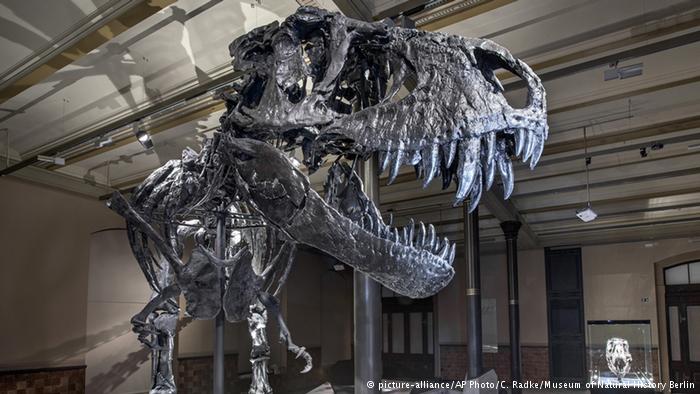
Tristan is happy to society
Only about twelve meters long, in contrast, is the skeleton of a Tyrannosaurus rex Tristan. It is for at least three years to see. The Remains were originally found in Montana (USA). A sponsor has the skeleton of the end of 2015, the Museum in Berlin is provided. Tristan is only 60 million years old, but his bones but real.
-
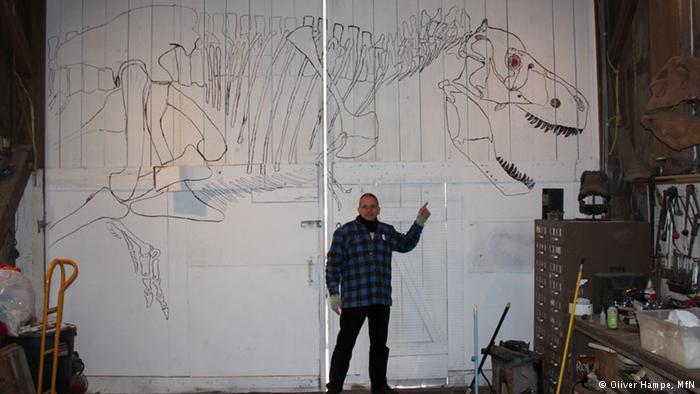
Lengthy Puzzlearbeit
Tristan is like a gigantic archaeological Puzzle consisting of 300 items, 170 of them are original, however, only laboriously assembled. That alone is the work but still not done. Because even during the exhibition will Tristan continue to be investigated scientifically.
-
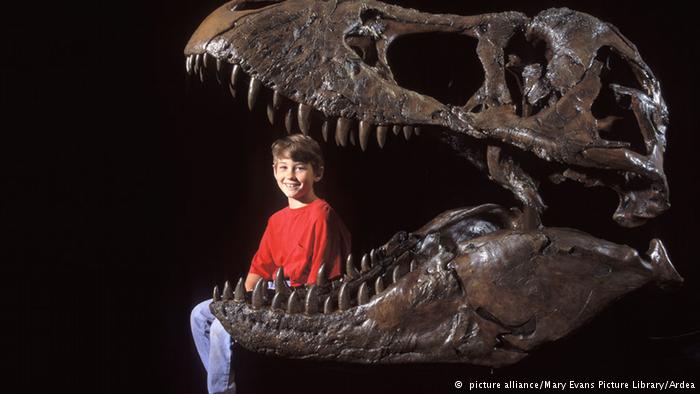
Size comparison
This T-rex skull is a bit smaller than the one from Berlin. Nevertheless shows the size comparison that people probably only be a Starter for the giants have been likely to be. However, there are doubts about whether the Dino is a good hunter. With its Stummelärmchen he would hardly prey capture. Also, he has no fangs. Perhaps he was more of a scavenger?
-

The solution to the puzzle in the x-ray
The key for the solution of these and other questions, could the Fraunhofer Institute for Integrated Circuits IIS have. Because there was recently a T-rex skull investigated: In the development center x-ray technology in Fürth, the researchers have a fossilized skull in the largest CT scanners pushed. The was extra developed to make whole Container to Shine through.
-
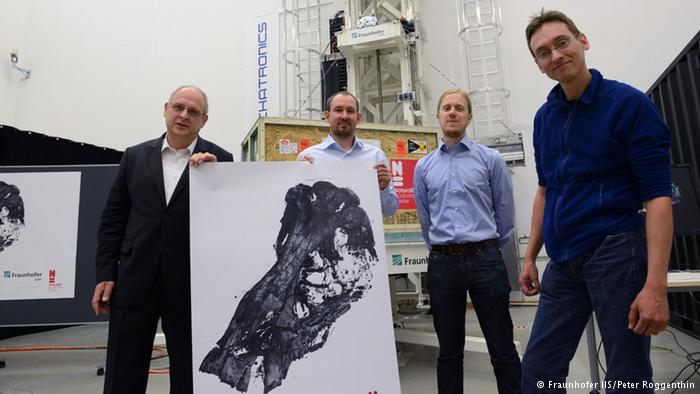
Strong Team for the science
The T-rex was like the, now in Berlin – in the U.S. Montana found. The Naturalis Biodiversity Center in the Netherlands provides the paleontological Expertise, and the IIS supports the research project by scanning and processing the data.
-
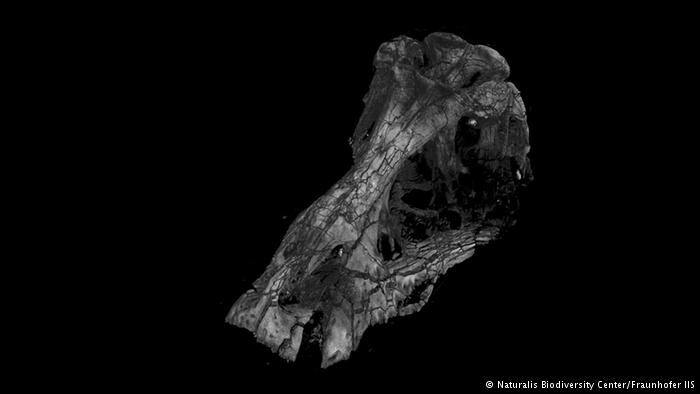
And so he sees in the CT Scan
Awesome, he doesn’t: The shipping crate, packing materials, and calcium deposits were removed. Only the actual skull remains. The Scan can be invisible weak points, such as cracks, before the reconstruction, to make it visible. Also, missing components now on the Computer may be printed to the skeleton to complete.
-
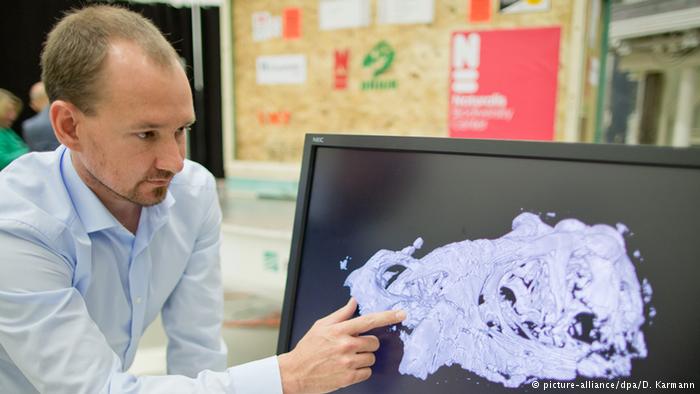
Look Inside
Michael Böhnel, one of the developers of the x-ray of the IIS, shows the three-dimensional image of the skull. The paleontologists are interested in particular for the forms in the Schädelinneren – around the cranium. This you can now examine without the skull opening.
Author: Fabian Schmidt
